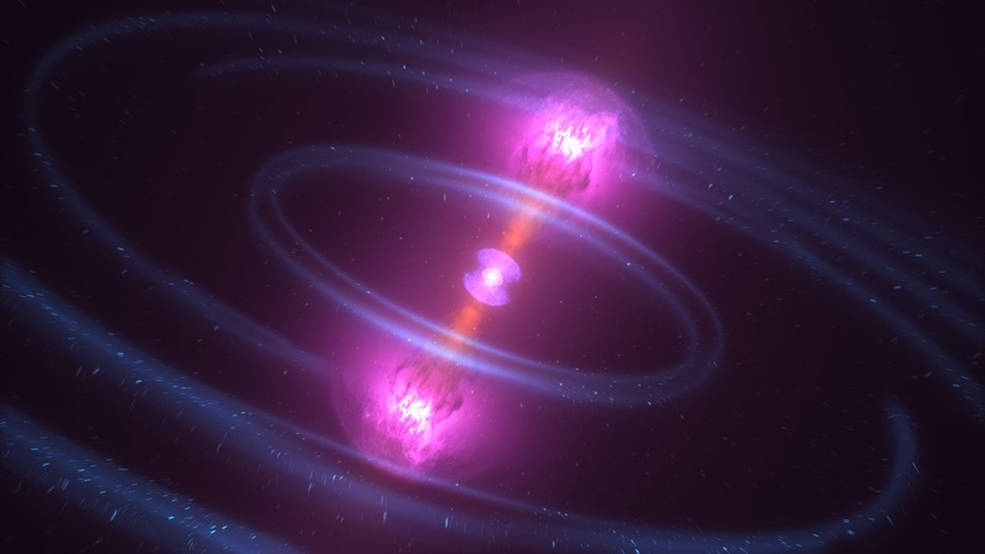Budget constraints are a major consideration for every space program throughout the world. Lately, NASA has taken a particularly bold approach, by not only innovating through novel ideas that could do great science, but innovating with the way they fund those missions. A good example of this innovation is the Astrophysics Pioneers program, which is a NASA fund program targeted at early- to mid-career researchers. The interesting thing about the program is that the overall budget for each project is capped at $20 million. Now, the program has selected its first four projects to move ahead to its second stage.
Continue reading “NASA has Chosen 4 new Pioneer Missions: Aspera, Pandora, StarBurst, and PEUO”Standford Team Creates mDOT, a Mini-Starshade for Exoplanet Research
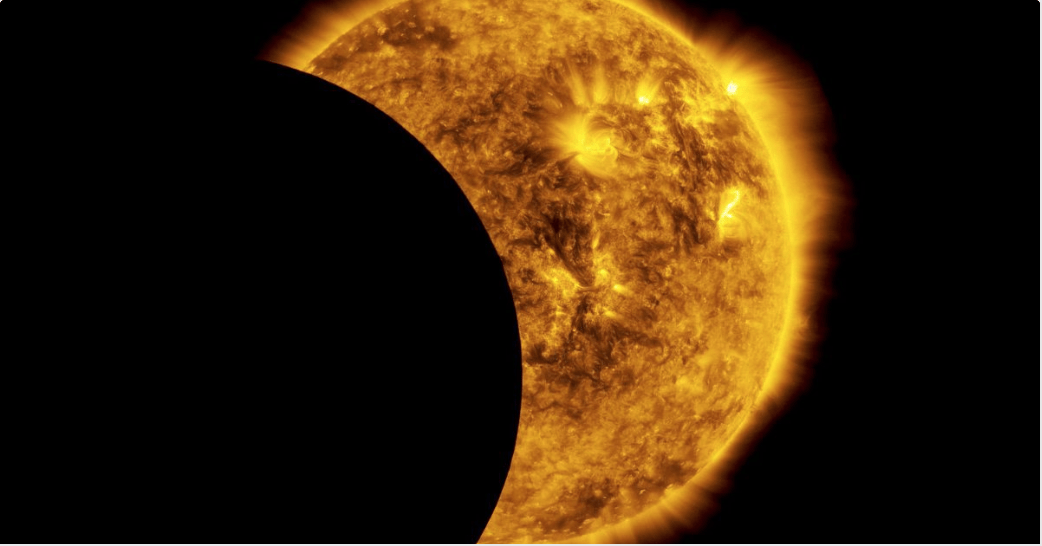
NASA has turned a lot of heads in recent years thanks to its New Worlds Mission concept – aka. Starshade. Consisting of a giant flower-shaped occulter, this proposed spacecraft is intended to be deployed alongside a space telescope (most likely the James Webb Space Telescope). It will then block the glare of distant stars, creating an artificial eclipse to make it easier to detect and study planets orbiting them.
The only problem is, this concept is expected to cost a pretty penny – an estimated $750 million to $3 billion at this point! Hence why Stanford Professor Simone D’Amico (with the help of exoplanet expert Bruce Macintosh) is proposing a scaled down version of the concept to demonstrate its effectiveness. Known as mDot, this occulter will do the same job, but at a fraction of the cost.
The purpose behind an occulter is simple. When hunting for exoplanets, astronomers are forced to rely predominantly on indirected methods – the most common being the Transit Method. This involves monitoring stars for dips in luminosity, which are attributed to planets passing between them and the observer. By measuring the rate and the frequency of these dips, astronomers are able to determine the sizes of exoplanets and their orbital periods.
As Simone D’Amico, whose lab is working on this eclipsing system, explained in a Stanford University press statement:
“With indirect measurements, you can detect objects near a star and figure out their orbit period and distance from the star. This is all important information, but with direct observation you could characterize the chemical composition of the planet and potentially observe signs of biological activity – life.”
However, this method also suffers from a substantial rate of false positives and generally requires that part of the planet’s orbit intersect a line-of-sight between the host star and Earth. Studying the exoplanets themselves is also quite difficult, since the light coming from the star is likely to be several billion times brighter than the light being reflected off the planet.
The ability to study this reflected light is of particular interest, since it would yield valuable data about the exoplanets’ atmospheres. As such, several key technologies are being developed to block out the interfering light of stars. A spacecraft equipped with an occulter is one such technology. Paired with a space telescope, this spacecraft would create an artificial eclipse in front of the star so objects around it (i.e. exoplanets) can be clearly seen.
But in addition to the significant cost of building one, there is also the issue of size and deployment. For such a mission to work, the occulter itself would need to be about the size of a baseball diamond – 27.5 meters (90 feet) in diameter. It would also need to be separated from the telescope by a distance equal to multiple Earth diameters and would have to be deployed beyond Earth’s orbit. All of this adds up to a rather pricey mission!
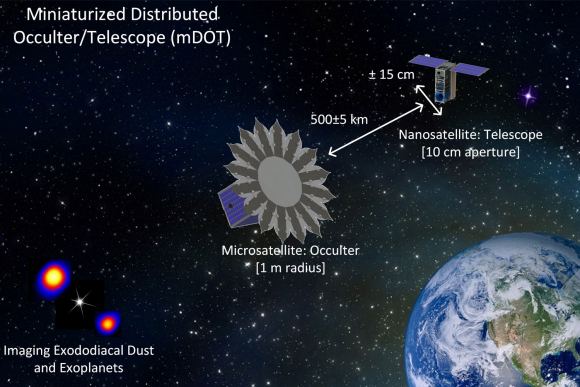
As such, D’Amico – an assistant professor and the head of the Space Rendezvous Laboratory (SRL) at Stanford – and and Bruce Macintosh (a Stanford professor of physics) teamed up to create a smaller version called the Miniaturized Distributed Occulter/Telescope (mDOT). The primary purpose of mDOT is to provide a low-cost flight demonstration of the technology, in the hopes of increasing confidence in a full-scale mission.
As Adam Koenig, a graduate student with the SRL, explained:
“So far, there has been no mission flown with the degree of sophistication that would be required for one of these exoplanet imaging observatories. When you’re asking headquarters for a few billion dollars to do something like this, it would be ideal to be able to say that we’ve already flown all of this before. This one is just bigger.”
Consisting of two parts, the mDOT system takes advantage of recent developments in miniaturization and small satellite (smallsat) technology. The first is a 100-kg microsatellite that is equipped with a 3-meter diameter starshade. The second is a 10-kg nanosatellite that carries a telescope measuring 10 cm (3.937 in) in diameter. Both components will be deployed in high Earth orbit with a nominal separation of less than 1,000 kilometers (621 mi).
With the help of colleagues from the SRL, the shape of mDOT’s starshade was reformulated to fit the constraints of a much smaller spacecraft. As Koenig explained, this scaled down and specially-designed starshade will be able to do the same job as the large-scale, flower-shaped version – and on a budget!
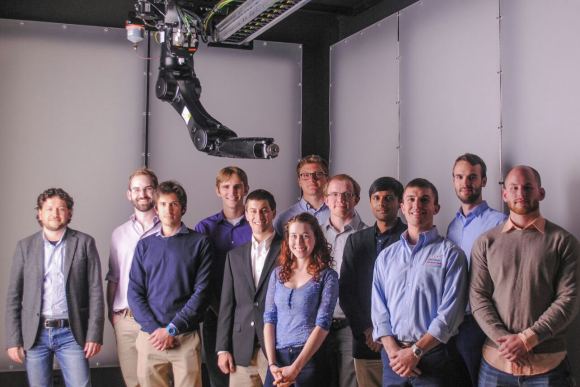
“With this special geometric shape, you can get the light diffracting around the starshade to cancel itself out,” he said. “Then, you get a very, very deep shadow right in the center. The shadow is deep enough that the light from the star won’t interfere with observations of a nearby planet.”
However, since the shadow created by mDOT’s starshade is only tens of centimeters in diameter, the nanosatellite will have do some careful maneuvering to stay within it. For this purpose, D’Amico and the SRL also designed an autonomous system for the nanosatellite, which would allow it to conduct formation maneuvers with the starshade, break formation when needed, and rendezvous with it again later.
An unfortunate limitation to the technology is the fact that it won’t be able to resolve Earth-like planets. Especially where M-type (red dwarf) stars are concerned, these planets are likely to orbit too close to their parent stars to be observed clearly. However, it will be able to resolve Jupiter-sized gas giants and help characterize exozodiacal dust concentrations around nearby stars – both of which are priorities for NASA.
In the meantime, D’Amico and his colleagues will be using the Testbed for Rendezvous and Optical Navigation (TRON) to test their mDOT concept. This facility was specially-built by D’Amico to replicate the types of complex and unique illumination conditions that are encountered by sensors in space. In the coming years, he and his team will be working to ensure that the system works before creating an eventual prototype.
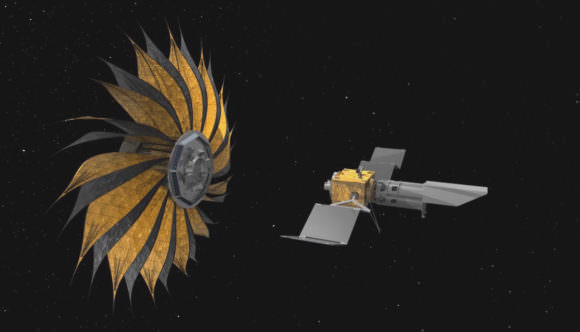
As D’Amico said of the work he and his colleagues at the SNL perform:
“I’m enthusiastic about my research program at Stanford because we’re tackling important challenges. I want to help answer fundamental questions and if you look in all current direction of space science and exploration – whether we’re trying to observe exoplanets, learn about the evolution of the universe, assemble structures in space or understand our planet – satellite formation-flying is the key enabler.”
Other projects that D’Amico and the SNL are currently engaged in include developing larger formations of tiny spacecraft (aka. “swarm satellites”). In the past, D’Amico has also collaborated with NASA on such projects as GRACE – a mission that mapped variations in Earth’s gravity field as part of the NASA Earth System Science Pathfinder (ESSP) program – and TanDEM-X, an SEA-sponsored mission which yielded 3D maps of Earth.
These and other projects which seek to leverage miniaturization for the sake of space exploration promise a new era of lower costs and greater accessibility. With applications ranging from swarms of tiny research and communications satellites to nanocraft capable of making the journey to Alpha Centauri at relativistic speeds (Breakthrough Starshot), the future of space looks pretty promising!
Be sure to check out this video of the TRON facility too, courtesy of Standford University:
Further Reading: Standford University
NASA Approves First Commercial Airlock for Space Station Science and SmallSat Deployment
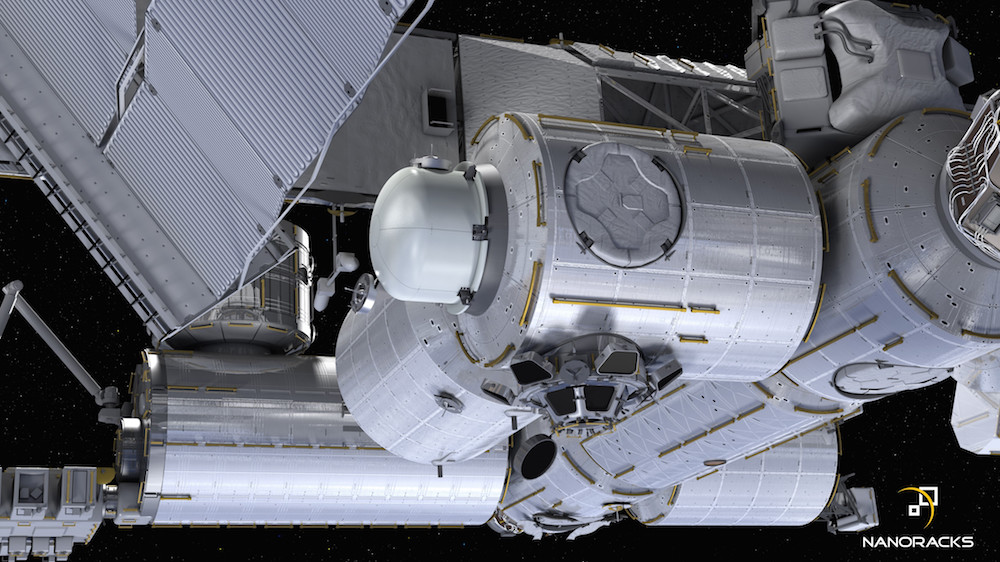

In a significant move towards further expansion of the International Space Station’s (ISS) burgeoning research and commercial space economy capabilities, NASA has approved the development of the first privately developed airlock and is targeting blastoff to the orbiting lab complex in two years.
Plans call for the commercial airlock to be launched on a commercial cargo vessel and installed on the U.S. segment of the ISS in 2019.
It enhances the US capability to place equipment and payloads outside and should triple the number of small satellites like CubeSats able to be deployed.
The privately funded commercial airlock is being developed by Nanoracks in partnership with Boeing, which is the prime contractor for the space station.
The airlock will be installed on an open port on the Tranquility module – that already is home to the seven windowed domed Cupola observation deck and the commercial BEAM expandable module built by Bigelow Aerospace.
“We want to utilize the space station to expose the commercial sector to new and novel uses of space, ultimately creating a new economy in low-Earth orbit for scientific research, technology development and human and cargo transportation,” said Sam Scimemi, director, ISS Division at NASA Headquarters in Washington, in a statement.
“We hope this new airlock will allow a diverse community to experiment and develop opportunities in space for the commercial sector.”
The airlock will launch aboard one of NASA’s commercial cargo suppliers in 2019. But the agency has not specified which contractor. The candidates include the SpaceX cargo Dragon, an enhanced ATK Cygnus or potentially the yet to fly SNC Dream Chaser.
Boeing will supply the airlock’s Passive Common Berthing Mechanism (CBM) hardware to connect it to the Tranquility module.
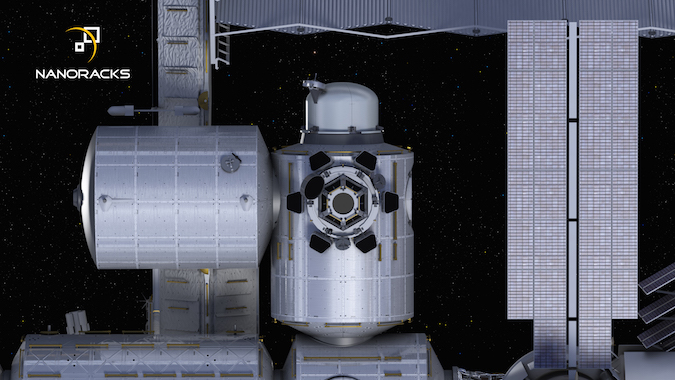
The airlock will beef up the capability of transferring equipment, payloads and deployable satellites from inside the ISS to outside, significantly increasing the utilization of ISS, says Boeing.
“The International Space Station allows NASA to conduct cutting-edge research and technology demonstrations for the next giant leap in human exploration and supports an emerging space economy in low-Earth orbit. Deployment of CubeSats and other small satellite payloads from the orbiting laboratory by commercial customers and NASA has increased in recent years. To support demand, NASA has accepted a proposal from NanoRacks to develop the first commercially funded airlock on the space station,” says NASA.
“The installation of NanoRacks’ commercial airlock will help us keep up with demand,” said Boeing International Space Station program manager Mark Mulqueen. “This is a big step in facilitating commercial business on the ISS.”
Right now the US uses the airlock on the Japanese Experiment Module (JEM) to place payloads on the stations exterior as well as for small satellite deployments. But the demand is outstripping the JEM’s availability.
The Nanoracks airlock will be larger and more robust to take up the slack.
NASA has stipulated that the Center for the Advancement of Science in Space (CASIS), NASA’s manager of the U.S. National Laboratory on the space station, will be responsible for coordinating all payload deployments from the commercial airlock – NASA and non NASA.
“We are entering a new chapter in the space station program where the private sector is taking on more responsibilities. We see this as only the beginning and are delighted to team with our friends at Boeing,” said Jeffrey Manber, CEO of NanoRacks.
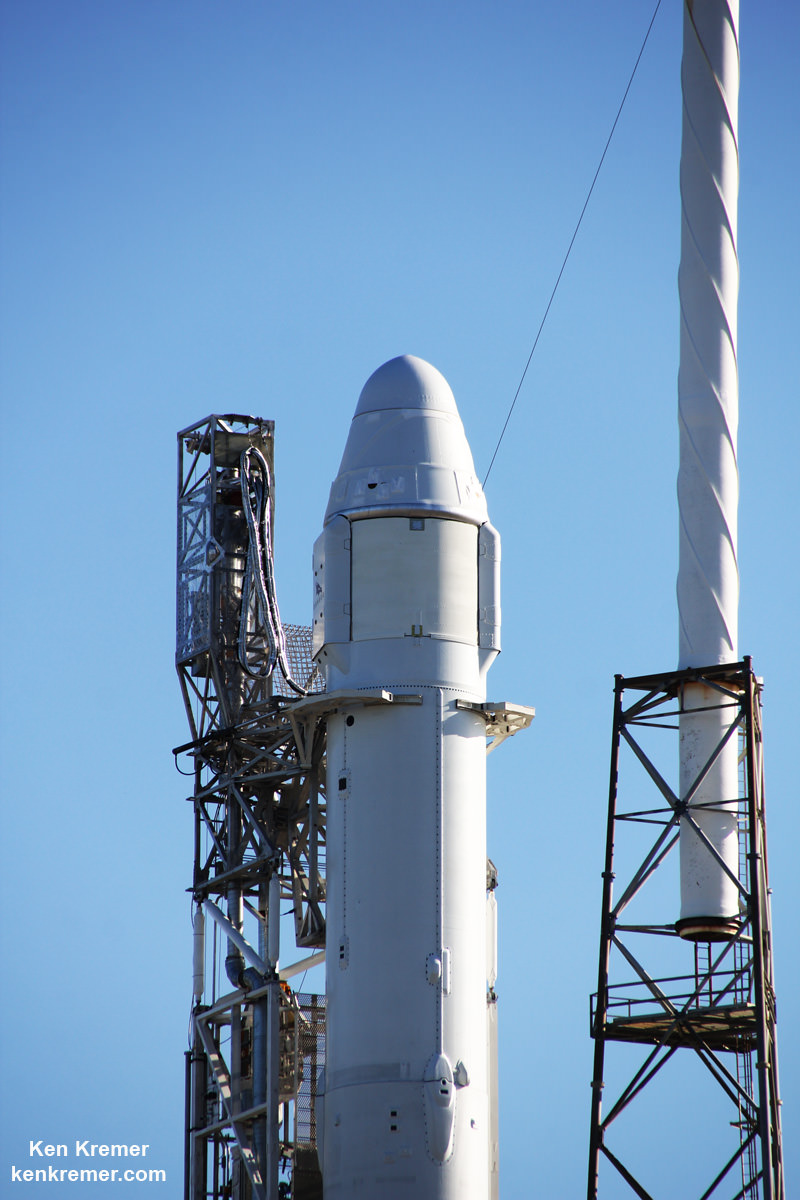
Stay tuned here for Ken’s continuing Earth and Planetary science and human spaceflight news.

